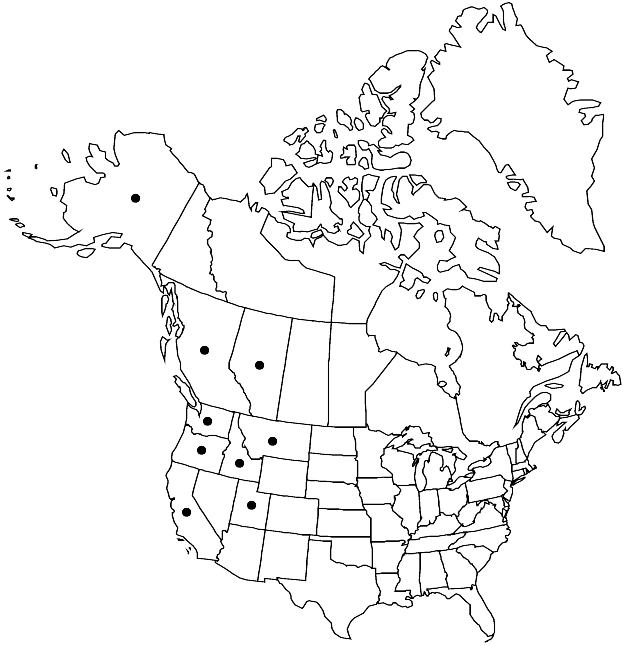Brachythecium asperrimum
Icon. Musc., suppl., 100. 1874.
Plants moderately small to medium-sized, occasionally large, in loose or moderately dense mats, light green to yellowish or brownish. Stems to 5–13 cm, creeping, terete to subcomplanate-foliate, regularly pinnate, branches to 10 (–15) mm, straight to flexuose, terete or subcomplanate-foliate. Stem-leaves erect or falcate-secund, densely to loosely arranged, often more loosely arranged at shoot apices, narrowly ovate or ovatelanceolate, broadest at 1/10–1/7 leaf length, strongly concave, slightly to moderately plicate, rarely not plicate, 1.5–2.5 × 0.5–0.9 mm; base short-rounded, ± conspicuously decurrent; margins plane or sometimes recurved (more commonly proximally), serrulate to base, rarely subentire; apex gradually or abruptly acuminate; costa to 50–75% leaf length, strong, terminal spine small; alar cells short-rectangular, enlarged, 10–25 × 8–15 µm, walls thin, region distinctly delimited, of 8–10 × 5–8 cells, pellucid; laminal cells linear, 50–120 × 5–10 µm; basal-cells to 10–15 µm wide, region indistinctly delimited. Branch leaves lanceolate to linear, 3–4: 1; in linear leaves alar cells extending along margins to broadest point of leaf, region to 12 cells, 3 or 4 cells wide. Sexual condition dioicous. Seta redbrown, 1.5–3.5 cm, rough. Capsule inclined to horizontal, redbrown, short-cylindric, curved, 1.5–2.5 mm; annulus separating by fragments; operculum long-conic. Spores 13–18 µm.
Habitat: Soil, rotten logs, trunks, lower branches of trees
Elevation: low to high elevations (0-2000 m)
Distribution

Alta., B.C., Alaska, Calif., Idaho, Mont., Oreg., Utah, Wash.
Discussion
Brachythecium asperrimum appears to be endemic to the Pacific Northwest. There is one collection issued as exsiccatae: “Canadian Musci, prepared by John Macoun 650. Brachythecium subintricatum N. Sp. Meeche’s Lake, Que., Sept. 24th 1893” (MO) that contains B. asperrimum. The locality disagrees with the protologue of B. subintricatum, which mentions the type locality as Vancouver, British Columbia. A. J. Grout (1928–1940, vol. 3) and subsequent authors reported B. asperrimum as an exclusively western species. In this case, the collection was probably mislabeled. Brachythecium asperrimum is related to B. frigidum, and R. R. Ireland et al. (1987) synonymized them. Here they are treated as separate species, following Grout, E. Lawton (1971), and D. H. Norris and J. R. Shevock (2004). Superficially, B. asperrimum looks like a large Brachytheciastrum with rather enlarged, quadrate alar cells. The leaf acumina are often falcate or flexuose, and the alar regions are triangular.
Selected References
None.
Lower Taxa
"long" is not a number."broad" is not a number.